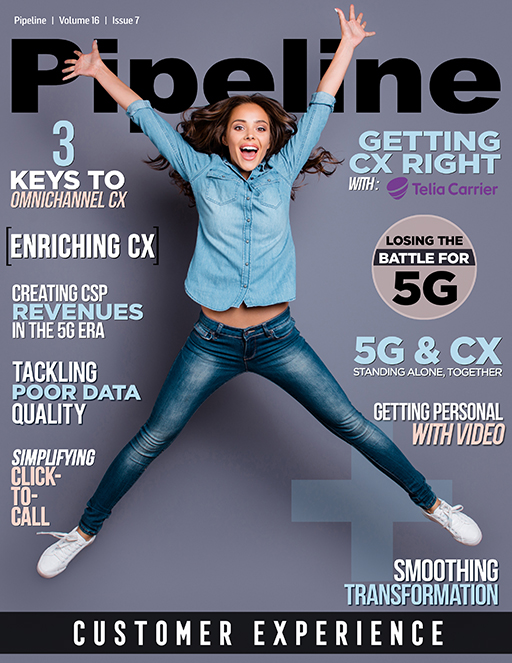Getting CX Right with Telia Carrier
But customers don’t always want to interface with a salesperson, and organizations need to have easy-to-use omnichannel tools in place.
“It really comes down to choice,” Haynes added. “For customers who want to order service through our website, we’ve made self-service options available to them. However, if they want to engage with an account manager, there are salespeople that would be thrilled to help them too. It’s really a matter of preference versus forcing customers through one channel or the other.”
Delivering CX
The next milestone in the customer journey is the delivery process, and this is often when the customer experience begins to falter. If all you’ve done is make the sales process easy, and you fail to deliver well, all you’ve accomplished is making it easy to take your customers’ money. This is an area that other industries have gotten right: think about the Amazon Prime experience with same-day delivery. But telecom tends to struggle here due to the complex nature of services.
From a customer’s perspective, what you are doing is never more important as what they need or are trying to accomplish. Understanding this is something Telia Carrier calls “customer empathy” and this was a persistent theme throughout our discussion.
“We’re not the ‘main event,’ the customer is,” says Haynes. “It’s important that our entire organization is emotionally aware enough to understand that we’re the tail, not the dog.”
Telia Carrier takes a vested interest in understanding the customer’s needs to recommend the right approach, design and solution. It also ensures that it provides clear communications to its customers to help establish meaningful, trusted relationships between real people.
“The customer is the main event and taking the time to understand what they are trying to accomplish is the foundation for creating a superior customer experience,” Haynes continued. “As we move into delivery, the quality of communication is our primary focus by promptly responding to customer requests and providing the right information quickly, openly, honestly, and transparently.”
Getting Personal
Telia Carrier takes CX a step further by grouping its organization into segment-specific delivery teams. This enables the company to build better relationships with its customers and understand their communication preferences. It also allows customers to build more personal relationships with them. Over the entire relationship, a typical Telia Carrier customer will only interact with two or three delivery coordinators. This fosters a close customer relationship and a level of familiarity customers value.
Telia Carrier also makes a concerted effort to listen to its customers. In addition to routine customer surveys, it embeds customer feedback mechanisms into its customer communications to collect and act upon customer input in real-time.
But, at the heart of Telia Carriers’ CX strategy is a certain level of organizational humility and seemingly rare recognition of the value of its customers.
“We want our customers to want to work with us, and for that you have to be humble and empathetic,” says Haynes. “All business is person-to-person, even if it’s B2B.”
To create a culture that is focused on providing a personal customer experience, Telia Carrier incorporates these company values throughout its business practices. Its CX principles have been distilled into three pillars: Dare, Care, and Simplify. These pillars are routinely reinforced on the walls of its offices, integrated into daily conversations, and are the lens through which it conducts strategic customer discussions. Customer empathy and clear communication are part of the hiring and onboarding evaluation process, customer experience wins are celebrated, and key CX metrics are used to measure individual performance and are tied to compensation. This ensures the entire organization is consistently aligned to its core values and its culture is centered on the customer first. But even the best employees need the right tools.



















